
Suggestions for what to put in a Maker Space.
- Subject:
- Business
- Education
- English Language Arts
- Math
- Science
- Material Type:
- Primary Source
- Author:
- Makerspaces.com
- Date Added:
- 03/14/2019

Suggestions for what to put in a Maker Space.

A quick list of 101 keyboard short cuts that will have you working faster than ever before!
Word Processing
F Keys
Excel
PowerPoint
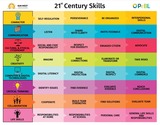
In today's world, 21st century skills are crucial for our learners as they provide the foundation for success in a rapidly evolving society. These skills, such as critical thinking, creativity, communication, collaboration, and digital literacy, equip children with the abilities to navigate complex challenges, adapt to change, and thrive in a globalized world. By nurturing these skills, we empower our learners to become agile, innovative, and socially responsible individuals who can actively contribute to the progress and well-being of our society.This resource has a 21st Century Skills poster, a big view 21st Century Skills Scope and Sequence document for grades 1-12, and a more focused view 21st Century Skills Scope and Sequence document for each of the following grade groupings 1-2, 3-6, 7-9, 10-12. This resource also has Digital Literacy Scope and Sequence documents for each of the following grade groupings 1-2, 3-6, 7-9, 10-12 (linked in each of the previous documents).

PowerPoint Tutorial on the 4 panes that make up the PowerPoint 2013 user interface. This video is part of our Most Excellent PowerPoint tips.
Watch previous PowerPoint Tutorials:
-Add YouTube Videos To Your Presentation: http://youtu.be/kX5d_7AXrQo
-Customize PowerPoint Background: http://youtu.be/y4ZPOhjFmP8
-Creating a Hypertext PowerPoint Presentation: http://youtu.be/c7xkZ6X42sA

Forget the stigma and shame. Financial expert Bruce Sellery helps you understand bankruptcy and how to decide whether it's the right decision for your family...
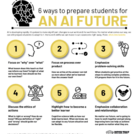
There are ways we can approach teaching that will help prepare our students for an AI future - and at the same time, AI-proof your assignments.
Some of these ideas include:
*Why over what
*Process over product
*Stress problem-solving
*Teach ethics explicitly
*Teach how to become a better learner explicitly
*Stress collaboration
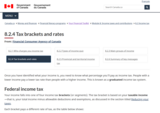
Once you have identified what your income is, you need to know what percentage you'll pay as income tax. People with a lower income pay a lower tax rate than people with a higher income. This is known as a graduated income tax system.
Federal income tax
Your income falls into one of four income tax brackets (or segments). The tax bracket is based on your taxable income—that is, your total income minus allowable deductions and exemptions, as discussed in the section titled Reducing your taxes.
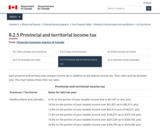
Each province and territory also charges income tax in addition to the federal income tax. Their rates and tax brackets vary. The chart below shows their tax rates.

Gaylord Bridegan, Certified Professional Ergonomists, discusses a few tips based on studies he has conducted in human computer interaction. This video demonstrates the most common types of workstation adjustments for computer operators. By following these nine simple steps will help reduce discomfort, fatigue, absenteeism, risk of musculoskeletal injuries and metabolic syndrome

Should A+ Certification Exam candidates use brain dump sites? My answer, might surprise you.
This is part of Mr. Ford's Guide to the A+ Certification Exam: How to Be A Computer Technician.

The Rider Reading Program is a Foundation community initiative that encourages students to read together and at the same time, provides them an opportunity to meet one of their favorite players! Through building an association between our brand and daily reading, the aim is to have kids enjoy and maintain positive feelings towards reading.
Dates are posted accordingly: The times account for afternoon-evening sessions, but can inquire about visiting the school and classrooms.
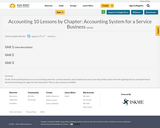
Grade 10 Accounting focuses on an accounting system for a service business. Each chapter focuses on one step of the system from the opening entry to closing the fiscal period and starting over again for the next period. There is also a lesson on GAAPs.
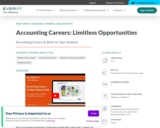
"Accounting Careers: Limitless Opportunities is a digital course that shows learners how an accounting background can help them achieve their career goals. Learners are exposed to the wide range of careers available in the accounting and finance space. This course covers the extensive benefits accounting skills can provide in business or in daily life, including contexts like entrepreneurship, investing, and personal finance."

"The purpose of this lesson is to provide a guided exploration of accounting-related careers, encouraging students to
consider the various industries in which accounting is a desired skill. Additionally, students are encouraged to explore
the attributes of accounting careers."

Accounting covers accounting principles and practices, the complete accounting cycle and creation of financial reports. Use of the general journal and special journals, general ledger, accounts payable, accounts receivable and proper financial reporting.This course provides instruction in the basic accounting procedures used to operate a business including sole proprietorship, partnerships, and corporations. The accounting procedures presented will also serve as a sound background for employment in office jobs and preparation for further education and training. The complete accounting cycle is covered, students learn how to us generally accepted accounting principles to prepare, analyze, verify financial transactions, reports and economic information to make decisions for organizations.The course trains students in the basics of manual and computerized accounting. Students learn accounting topics including ethics, accounting principles, computing accounting, accounting terminology, job specific accounting, and clerical duties related to accounting. Students also gain real-world applications in income tax, personal finance, and stock market.
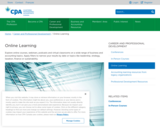
Live and on demand webinars about accounting careers and skills.
Explore online courses, webinars, podcasts and virtual classrooms on a wide range of business and accounting topics. Apply filters to narrow your results by date or topics like leadership, strategy, taxation, finance or sustainability.
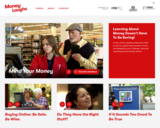
Learning About Money Doesn’t Have To Be Boring!
A series of short vignettes produced for CFEE by Just For Laughs Gags focusing on money and highlighting money challenges, along with supporting tips and teaching material and suggested classroom activities and lesson ideas.
- Mind Your Money (PIN and password security)
- Buying Online: Be Safe. Be Wise (identifying secure websites, public WIFI and password security)
- Do They Have the Right Stuff (Trusted Advice, Selecting Financial Advisors, Good Money Decisions)
- If It Sounds Too Good To Be True (suspicious offers, risk/reward, credible investment sources)
-Catch It If You Can - In the Small Print (contracts, documents, verbal agreements, protect yourself)
- Why Pay More? (credit card offers, payments and interest charges, statement information, credit score)
- Need it, Want it, It's Your Call (need vs want, spending choices, compulsive buying, influences on buying)
- Take The Time (spending decisions, pressures to spend, comparison shopping, budget your money, return policies)
- Get the Credit You Deserve (credit score, paying off debt, credit rating accuracy, importance of a credit score)
- Scam Alert! (scams, fraud, personal information, protect your identity)
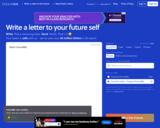
Students can write a letter to their future self, outlining future plans (financial, education, career, family, wellness). This would be a nice reminder to themselves in the future regarding the plans they made before. Research shows that if you make a plan, you are more likely to realize those plans and dreams! Hopefully this will be a fun exercise for students to participate in.
Steps to participate: Write the letter, pick a receiving date, send the letter and verify the information. You can pick your delivery date or select 6 months, 1 year, 3 years, 5 years, 10 years or a specific date that you would like. Letters can be private or public (anonymous). The letter goes to a an email address, so be sure to keep that email active (with password and access).

Welcome to the "Keep Your Balance" activity. You are moving out on your own! You will receive no help from home! In this scenario you are old enough to drive a car if you choose to include the expenses of a car in your monthly expenses. You may share accommodation but each person must have his or her own bedroom.

Our first Mr. Ford's Class Most Excellent PowerPoint Tip. This video shows you how to quickly and easily add YouTube videos to your PowerPoint presentation.